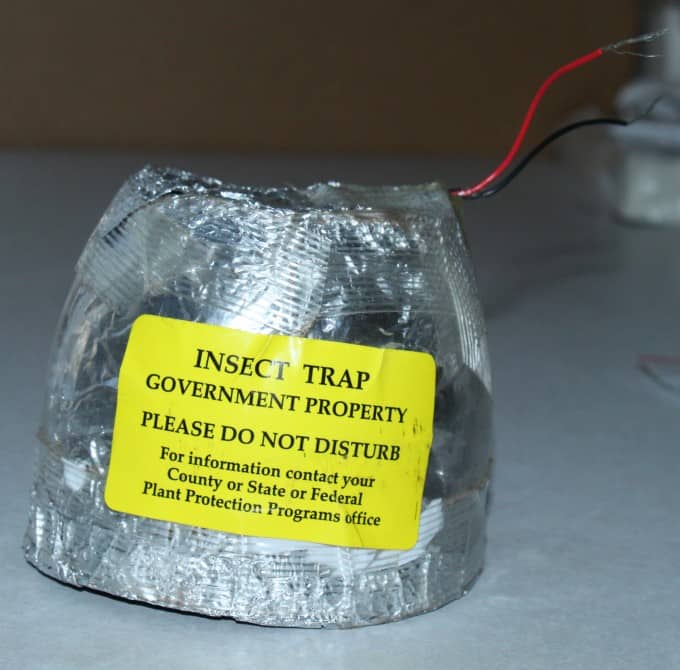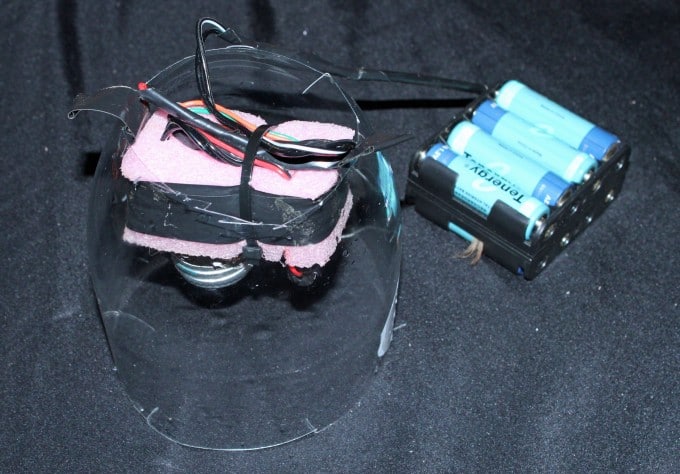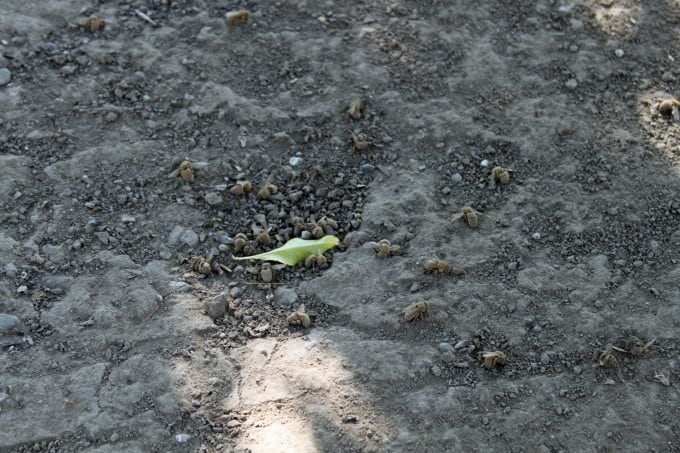
The past few months I have been trying to capture honey bees that are infected with Phorid Flies in the Chico, CA area. So what is a Phorid Fly? It is a fly commonly referred to as the humpback-fly because of its appearance. Previously the fly was known to parasitize bumble bees and paper wasps but has now transferred host and is able to reproduce using the honey bee (Apis mellifera). It has been termed the “Zombee” because once parasitized, the honey bee behaves irregularly, taking flight at night and dying away from the hive. More information on this name and the fly can be found at (https://www.zombeewatch.org/) and in this articles from PLoS ONE (http://www.plosone.org/article/info%3Adoi%2F10.1371%2Fjournal.pone.0029639). It has been found that setting light traps can lure the bees at night and I have been doing so for some time now.

I will share some of my experience so far in looking for the Phorid fly. Setting a light trap up near honey bee colonies will most certainly attract bees. In some cases you will collect a lot of bees, some dead and some alive. I like to hang my traps at dusk and then collect them the next day. I hang most of my traps from trees so it helps me if I place a sheet underneath of the light (white is best). If you don’t have a sheet, it is best to look for flat surfaces to hang or set your trap. I bring a rake with to clean the area of debris; this makes it easier to look for dead, crawling, disoriented or exhausted bees. It’s hard to tell if a bee is exhausted, sprayed with a pesticide or infected with the Phorid fly larvae so it is important to keep live crawling bees in separate containers from dead bees. I do the same for any drones that are collected whether dead or crawling. As in the tutorial (https://www.zombeewatch.org/tutorial) to prevent you from getting stung, pick up bees with tweezers or forceps. If using a sheet you can congregate the bees into the center and pick out the moving bees and place them into a separate container.

When collecting the bees it is important to record information. I record the date and time I set up the trap and the time I collect the bees from the trap or the ground. I also note what kind of light trap I used. I will put an individual label into or on the outside of each container describing its contents. I will also write down this information on a notepad to later transfer to an excel spreadsheet to store electronically. To store and rear any potential Phorid flies from the bees, I use cut off water bottles but any container will do. Avoid excess water in containers as this will cause mold to grow. A clear container is preferable to help see pupa on the sides of the container or emerging larva. I like to use paper towel squares to cover the opening and secure it on top with a rubber band (see image below). This prevents suffocating the fly larvae since decomposition will consume oxygen in a sealed container. This is important if collecting larger specimen samples.

Now that you have the bees in the container you can store them in a dark room at room temperature. Avoid keeping them in sunlight since this may dry bees out prematurely and desiccate fly larvae. After a week or two, it is a good time to check the containers to see if any Phorid flies have emerged from the dead bees. You can often see pupal cases stuck to the sides of the containers. Once you see the pupal cases you have a few more weeks to wait for adult flies to eclose from the cases to positively identify if these flies are Phorid flies. It is important to save adult flies either pinned or in alcohol for positive identification and possible state or county records. If I find some Phorid flies, I will continue this blog with some more insight and photographs.